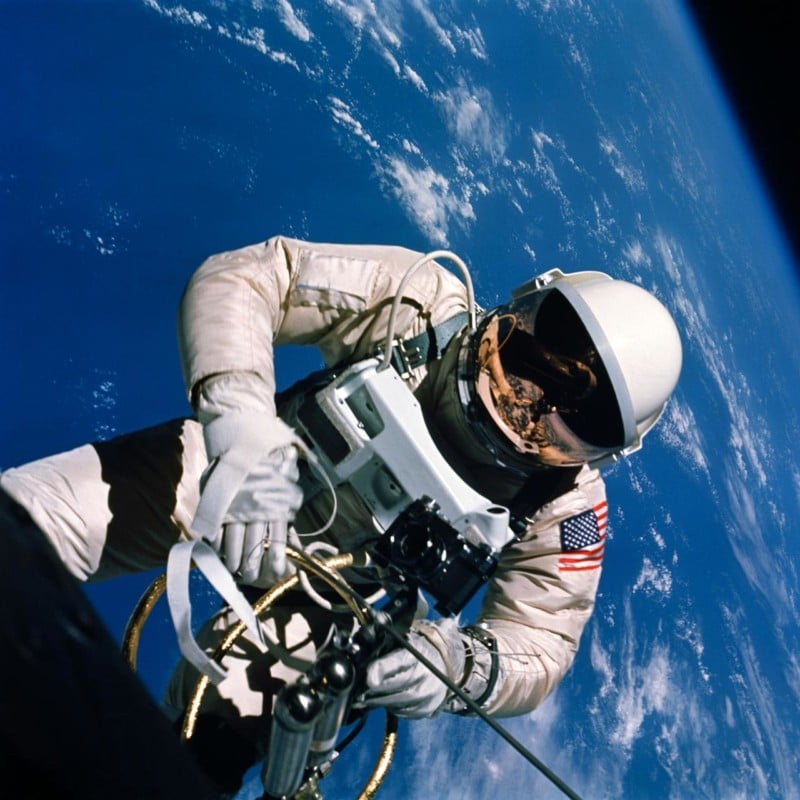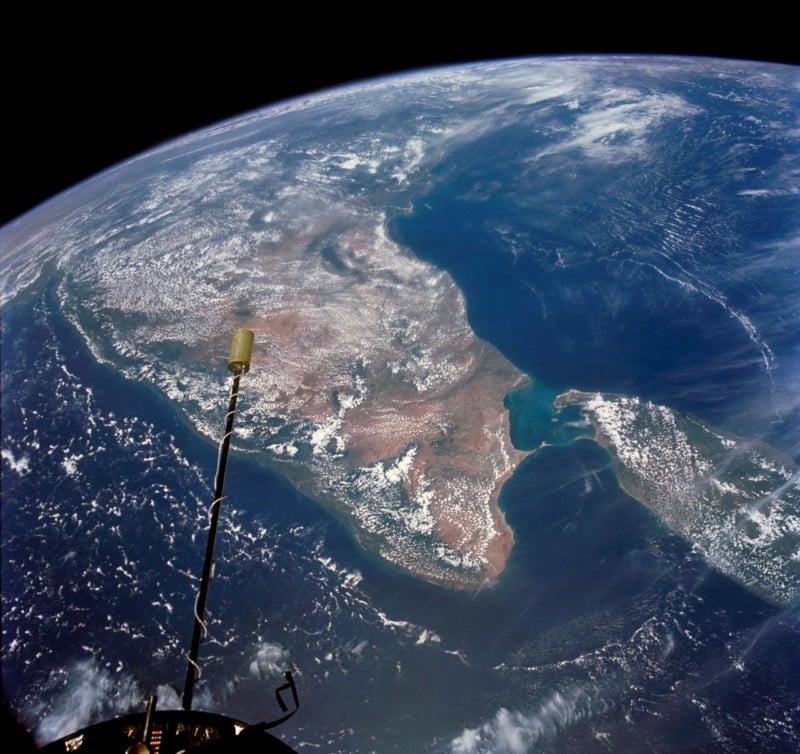The History of Astronaut Photography: Using Cameras in Space
If you ever wanted to get a quick history of cameras and their use by NASA, YouTuber Scott Manly put together an excellent resource. In this 14-minute video, Manly explains the history of cameras used in the Space Program, what they were, and the changes manufacturers eventually made at NASA’s request.
Most of this video is spent on the history of film cameras in space, dating back to the first civilian camera used by NASA (an Ansco, which was a rebranded Minolta, purchased by astronaut John Glenn in 1962) and discusses how eventually camera manufacturers like Hasselblad and Nikon worked directly with NASA to produce cameras to special specifications.

Copyright, NASA

Copyright, NASA
By the end of the video, Manly explains that using film in space actually had a major drawback if expeditions lasted longer than a few weeks. Radiation from space would “fog up” the film, making it unsuitable for capturing images. As a result, film was stored in heavy, shielded boxes on spacecraft to protect them. Switching to digital did go a long way to alleviating the issue and eliminated the need for these boxes, but it did not solve the problem completely. Digital sensors can still suffer pixel damage due to radiation during extended journies like one might expect on the International Space Station. And while Manly believes this damage to sensors isn’t a practical reason to go back to film, we may see the use of it return for artistic reasons as space travel becomes cheaper and more accessible.
You can read the history of Hasselblad’s involvement with NASA here, and Nikon’s here. You can also learn more about John Glenn’s Ansco camera on the Smithsonian’s website here.